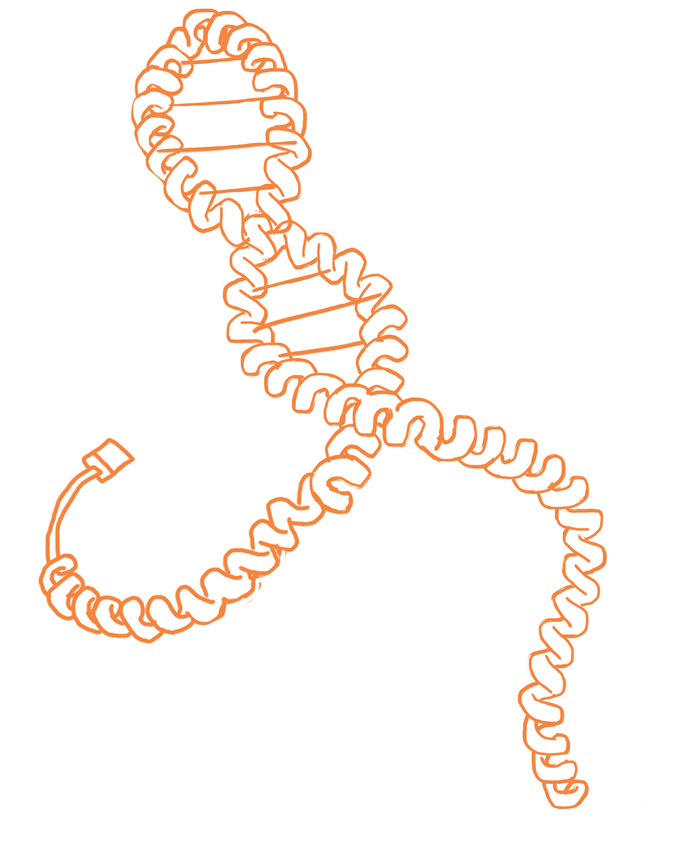
On the surface, the relationship of feminism to biotechnologies is an easy one. As a cross-disciplinary field with multiple branches, feminism has been utilized to imagine the future of the human body, to consider the way bodies are thought about in terms of their materiality and cultural/historical context, and to critique the way female bodies are represented as metaphorical “figures” and visualized as subjects. But with recent developments in technology, it has become important for feminism to supplement the study of gender as a socially constructed concept and turn “back” to the biological in order to be progressive. As artists and theorists we must look at the representational implications of sciences and technologies that endeavor to enhance biological creatures through prosthetics, create genetically modified and transgenic organisms, and imitate their reproductive processes through cloning and other forms of DNA manipulation. As a method of inquiry and critical intervention into the language, representations, and politics around the notion of “body,” feminism is uniquely equipped to address the overlap between scientists and artists in the new field of biotechnologies by closely examining the way issues of choice, self-determination and agency play out in projects across the disciplines.
Presented almost a decade ago, Eduardo Kac’s Genesis project (1998-99) used Morse code to translate a biblical verse—the so-called “dominion passage”—into a synthetic chromosome, which he then incorporated into DNA of E. coli bacteria using a common laboratory process.12 The verse originally read, “Let man have dominion over the fish of the sea and over the fowl of the air and over every living thing that moves upon the earth.” (Genesis 1:26) The biblically enhanced bacteria were bred with normal strains under ultraviolet lights in Petri dishes at the exhibition. Their progeny’s DNA was then scrutinized for evidence of genetic alterations. 3
The mis/translations made by Kac’s bacteria only resulted in a few letters being changed—underwhelming to say the least. But quickly one realizes this exercise was not the point of the exhibition. In Kac’s project, biology is presented as both language and language-generator. It is part code, part animal, and part machine. But it is also part spectator. Through an interactive website, Genesis viewers could trigger ultraviolet lights in the gallery, exciting the bacteria and causing them to reproduce more rapidly and with higher rates of mutation (UV radiation damages DNA).
Genesis reveals vestiges of the artist’s earlier work from the pre-Web 1980s, which used telecommunications, fax machines, transistors, and early “telepresence” technologies. In his Ornitorrinco project (1989-96), Kac used a publicly available “teleoperation system” that enabled “users in public and private spaces to remotely access a fully mobile and wireless robot and alter its remote location via the telephone network.”4 Kac knows that in order to protect the information content of an electronic signal, it must be coded and decoded on either end of transmission. Mathematical engineer Claude E. Shannon put forward this basic tenet of information theory in the 1940s. By using the Morse system to encode the biblical message before insertion into the biological system, Kac puts the reproductive processes of “wet” (biological) media in parallel with the way electronic circuitry carries information. Using Shannon’s model as a conceptual foundation, Kac suggests that the thermal “noise” that causes errors in communications has a relationship to his bacteria’s reproductive processes and mutational rates.
In the “carnality” of the Petri dish, more than just the bacteria were engaged in the heat of the moment. Virtual participants witnessed and influenced the development of transgenic art, breaking the isolation of the bacteria and virtually bringing them into their homes via the internet. In her seminal book How We Became Posthuman, critical theorist N. Katherine Hayles wrote about cybernetic circuits such as these. The feedback loop connecting man to machine “splices your will, desire, and perception into a distributed cognitive system.”5 In Genesis, human/machine/bacteria all shared the interface.
Kac has stated Genesis was about ethics and challenging belief systems.6 His biologically imitative synthesis of DNA extends this concept into the realm of biotechnologies. The reproductive processes used by Kac present the hierarchies in Western civilization that are handed down through scripture, but do not critique them. Rather, Kac simply re-inscribes those power structures. It is highly likely that participants within the cybernetic loop of the Genesis project thought about ethical dimensions of manipulating other life forms for art’s sake. They probably also considered carefully their “God-given” privileges over the bacteria—as suggested not only by the excerpted biblical passage but also by the way they implemented their power remotely through a website. Still, the project begs the question: How does Kac’s audience fit within his model of a highly distributed, biotech capitalist system? How might they be “enacting” the very aspects of the Western world’s dominance he pretends to critique?
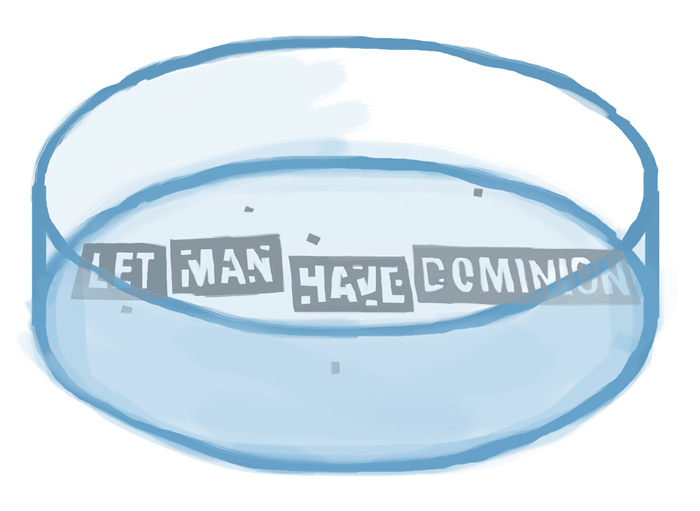
Whether Kac is blind to present-day implications of the Judeo-Christian faith he quotes is not clear. From a feminist perspective, however, Kac potentially implies a relationship between the bacteria and their human facilitators, which use the same processes of cellular reproduction. In such an expanded reading, Genesis could be considered one work at the beginning of an important debate within art communities about the relationship between biotechnologies and all bodies, but particularly the human. Whenever a body “enacts” its experience through a specific circumstance it calls to, signals, or differentiates itself from those bodies around it. Specificities such as race, gender, age, anatomy, ability, and history all come into play. Within a feminist model, the importance of difference and context is recognized. Also understood are the ways through which power operates in social and representational systems. From this viewpoint, Kac’s audience asserted dominion not just because of his chosen passage, but also because their disembodied state gave them an invisibility and universality to act with impunity.
In Kac’s Genesis, humans became voyeuristic cyborgs who played out their own desires and “spliced” identities. In the guise of a project about transgenics, Kac used the Internet to turn a mirror on virtual subjects who have become instantiated in the flesh. Hayles has reflected upon the manipulative dynamics between the flesh and the virtual in an informative essay on Kac’s project entitled Who’s in Control Here. She cautions about the biosciences, foreshadowing new hierarchies generated from his proposal. “In this fusion of … biology with technology, spectators with genetically modified creatures, I think I see the future of the human… We become like the creatures upon which we gaze, biomedia created by the drive for domination and control.”7
In the millennial era, the “man/machine” interface has been upgraded to “optimized flesh.” In his definitive text on the subject, critical theorist Eugene Thacker explains, “Biomedia is generative, establishing new technical configurations in which the biological can constantly surpass itself.”8 Just as the hybrid concept seems to suggest, the term “biomedia”—including DNA chips, cloning, nanotechnology, and tissue engineering—inheres biology to technology in inextricable ways. The neologism makes both beginning and end clear: in the beginning, flesh, and then, a walking wet-lab that is itself a database of human triumph and folly. With Thacker’s definition in mind, we can see why Hayles is ultimately compelled to ask: “How will capitalism, with its insatiable appetite for commodifying media, affect the biomedia that includes our own bodies?”9 Herein Kac inadvertently presents a predicament—not of transgenic bacteria and the ethics of its observers—but of the amoebic “biomedia” that soon will be us.
New hierarchies will be established by biomedia, suggesting that as bodies increasingly are imagined to be “upgradeable” and those ameliorations are achieved through DNA synthesis, the concept of “body” itself will need to be “brought up to code.” In the cultural narrative of what constitutes a body the normative will begin to list toward those standards. This has implications for natural bodies, especially those of transgender and biological women, and even more acutely, those without the means to afford such luxury. Women already invest in normative modifications at alarming rates—breast enlargements, laser treatments, hair removal, Botox injections, etc. The market for “feminization” is booming. But in the end, this is just a pyramid scheme; the commercializing drive of biomedia will undoubtedly keep upping the ante in the beauty and sex industries. But what if women were to use their buying power for other purposes?
In a follow-up to Posthuman that appeared in Cultural Critique, Hayles makes reference to Bruce Sterling’s Holy Fire (1996), a science fiction story grappling with the implications of biomedia within the realm of medicine. In this narrative, a ninety-four year-old woman receives an “extreme” regenerative treatment to restore her body to that of a twenty-year-old. The “incongruities” of an ancient consciousness in the hormonally explosive body of a young woman suggest mind-blowing alternate models of procreation. But Sterling seems to admonish his own character for having her natural desires and, oddly, erases all the common sense and experience of the mature woman in the construction of his narrative. For Hayles, his story exemplifies chaos because the “mind cannot be separated from body.”10 In addition, the narrative is sexist and exclusionary—the power of our heroine’s mind is made irrelevant by the author’s fetishistic fantasy of youth. It is interesting to expand on the utopian possibilities of this story because they are potentially revolutionary. Were Holy Fire written by someone informed by feminist consciousness, it might have employed the utopian promises of biotech precisely to get around the Cartesian mind/body dualisms Hayles identifies. What if the “holy fire” was a female mind not ever separated from the body, just continually regenerating? The choices this woman might make with her age-old mind in situational intercourses such as sex or networked communication could reverberate through all sectors of society. Realistically though, the future of biomedia technologies will probably be much less matriarchal. If anything changes it may be that humans have a different relationship to reproduction (some might argue we are already on that path given current infertility medicine11) and will exercise their access to capital through this technology as with any other, reinforcing pre-existing class stratification.
Another science fiction story foregrounds the crisis of biomedia in terms of human evolution. Written by Dr. Thomas D. Schneider, a research biologist at the National Cancer Institute who applies information theory to molecular biology, “The Bottle” was published in Nature (July 2000). It is a futuristic parable of a marooned scientist—perhaps the last survivor, or a renegade in exile—who finds test tubes from his lost civilization washed up on the beach. Remembering the “voice of his mother,” he drinks the fluid “nanotechnology” that tastes of “sand and apricots” and pours another into a pond. At the water’s edge, tears come to his eyes. He kneels to inspect the pond, now an “industrial fluid,” and discovers “purple bacteriorhodopsin absorbing sunlight and pumping hydrogen ions into nanotube fuel containers.” Even though he can communicate with gold-silicon computer chips floating in the pond that are “under his direct mental radio control,” his loneliness is still an agony. “I am male, he thought.” The scientist dreams of beating the system: “Take a cell, duplicate the X, remove the Y.” At his directive, the pond creates an egg with his altered genetic material. It “hatches” a baby girl. He nurtures her, but she dies. The technology that bore her is imperfect. He walks to the edge of the ocean and watches the dolphins. He is infant biomedia, stranded and wishing he had some kind of community.
The message of Schneider’s story is not far from his scientific interest in seeing what happens at the outer limits of a species’ evolutionary pattern. In his computer model “Ev” he has integrated the high-dimensional mathematics of information theory into the study of evolution through a software program that can produce iterations of hundreds of thousands of generations.12 In “Ev,” DNA sequences change through random genetic “mistakes” generated by the program. The mistakes are mutations. As is the case in Genesis, the mutations in “Ev” are equivalent to “noise.”
Schneider’s evolutionary models are created using computational biology. Known also as bioinformatics, this method of investigation uses applied mathematics, statistics, chemistry, and other disciplines to model and solve problems in biology. In bioinformatics, theories of information are applied to the study of living creatures, their evolution and DNA. Importantly, however, they are not applied to the many external factors that intelligent creatures like humans contribute to any such system. For example, while bioinformatics can model normal distributions of a hormone in a group of subjects—human or not—it must be acknowledged that a host of factors, some invisible or unknown, might contribute to the actions of those biological organisms in different times and circumstances. Such variables can be described but cannot be quantified.
Going back to Kac’s project, it is clear that phenomena existed in Genesis outside of what might be computed within a bioinformatics model. The mating habits of bacteria, for example, were dependent on ultraviolet light stimulation that resulted from human action, which in turn was motivated by thought, intention and even whim. Additionally, the bacteria’s overall health relied upon care given to them by Kac or gallery attendants.13 This bio-informational model mirrors works being done currently in labs like Schneider’s. While evolution is studied on the ostensibly neutral ground of science, it is easily politicized and brought onto the slippery slope of ethical debate. Both Schneider’s computer simulations and Kac’s transgenic projects go beyond bioinformatics in their interpretation of data. In Kac’s case, advances in biotechnologies pervert literal interpretations of religious texts and challenge ethical principals when they are brought into a different medium. In Schneider’s circumstance, his models have been subject to vitriolic rebuffs by creationists and intelligent-design advocates and have required careful point-by-point rebuttals.14 Such heated debates attest to the challenge bioinformatics can also present to literalist biblical teleologies.
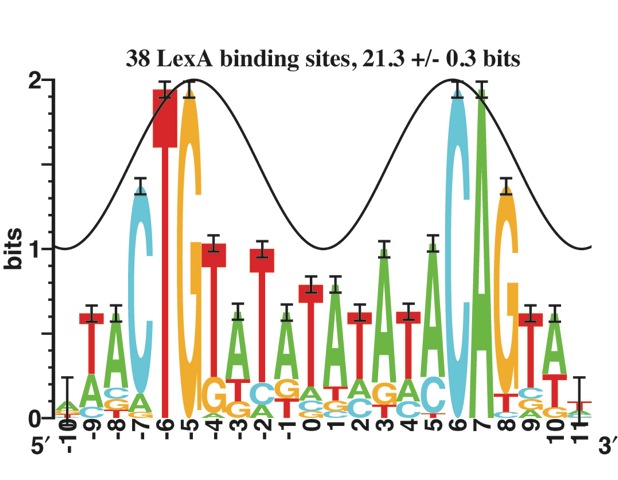
In an interview conducted with Hayles, I asked her to respond to some concepts developed within Schneider’s work, specifically those in his paper “Claude Shannon: Biologist” wherein he postulates “communications systems and molecular biology are headed on a collision course.” Schneider bases his idea on the fact that Shannon, the influential “father” of information theory, developed his foundational channel capacity theory using biology rather than physics or thermodynamic models. Schneider goes one step further: “As electrical circuits approach molecular sizes, the results of molecular biologists can be used to guide designs. We might envision a day when communications and biology are treated as a single field.”15 If he indeed suggests living cells are destined to become communication instruments, then should we focus our attention again on ethics? This elicited the following response from Hayles: “I think the question we need to ask in this situation is: Whose communication is being privileged?”16 Such a moment shows how a feminist lens might be usefully applied to biotechnology. By focusing on how biology forms discourse, its real-world effects can be seen and discussed in light of the embedded power relationships of dominant culture.17 Eugene Thacker also points out that the instrumental telos of molecular “machines” in nanotechnology emphasizes a Cartesian way of thinking about bodies in the world.18
Hayles’ critical history of information theory, How We Became Posthuman, traces the steady disembodiment of information in culture since the technical innovations of Claude Shannon. In her discussion of Shannon’s early electronic rat experiments, Hayles notes that his binary distinction between “signal” and “noise” has had a ripple effect on the way people think about information. “The structure of [Shannon’s] theory implied that change was deviation and that deviation should be corrected.” She mentions that as early as 1950 scientists such as John Stroud of the U.S. Naval Electronic Laboratory in San Diego pointed to the “far reaching implications of Shannon’s [binary] construction of information.” Stroud observed, “If we at anytime relax our awareness of the way in which we originally defined the signal, we thereby automatically call all of the remainder of the received message the ‘not’ signal or noise.”19 Indeed, Schneider notes that common misinterpretations of Shannon assume his theories apply only to binary systems. However, analog signals like a bird song or the human voice are equally described by information theory.20
With certainty it can be said that Shannon saw information in terms of static quantities—bits per second—rather than as an agent of change. Importantly, notes Hayles, Shannon was blind to the idea that the extra-linguistic signal of noise, usually considered interference, could have a communicative effect upon the receiver’s mind and generate new thought21—all the better perhaps because not intended. Schneider says Shannon’s work comes from an engineering perspective, however, and “is not about meaning and value.” Shannon was “only concerned with moving the message.”22 Nevertheless it is important to keep in focus the influential nature of the binary language Shannon used to construct his theory. As Hayles points out, these ideas trickle into culture through narrative and metaphor.23
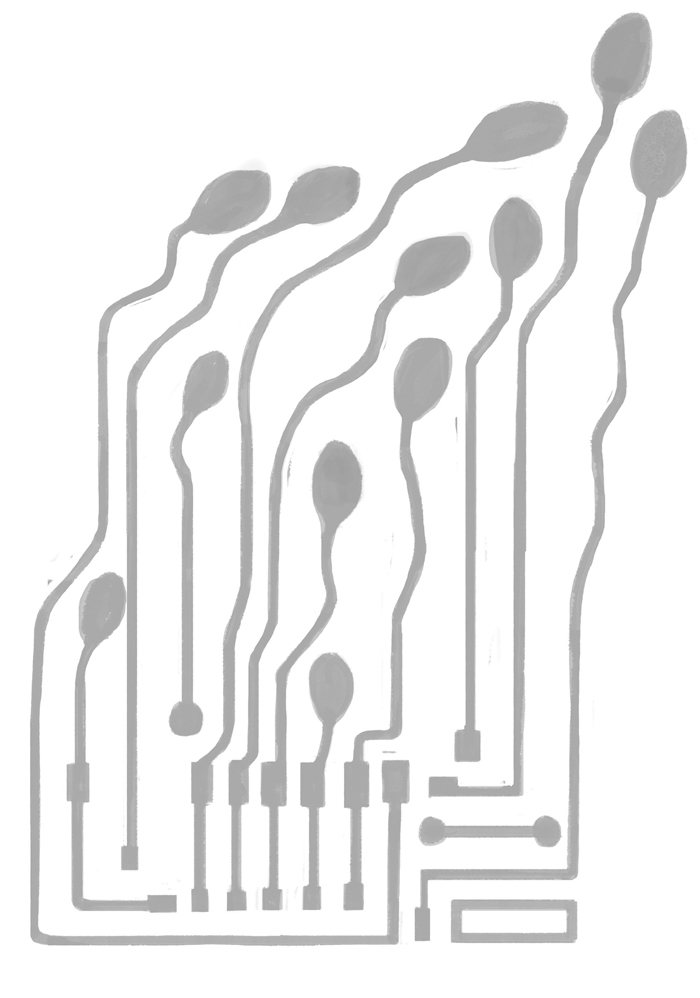
Hayles asks us to make a linguistic comparison to a competing model of information forwarded at the time by Donald MacCrimmon MacKay, a research professor of communications and neurology. She notes, “MacKay defines information in terms of what it does… Verb-like, it becomes a process someone enacts.”24 MacKay’s idea, however, “requires that psychological states be quantifiable and measurable…, something not in reach”25 at that time. Hayles proposes that MacKay’s model “implies context and embodiment.”26 “Embodiment” as a term has been used to upend long-standing rationalist assumptions that mind and body are distinct entities and that bodies are inherently mechanistic and subservient to the will of the mind. Within this rubric, the flesh “thinks” and the body informs the mind. Similarly, embodied information cannot be detached from its material carrier substrate. To give an example, the early wax cylinders used to record music hold important historical information in addition to the music’s pure notes. This information is lost when such recordings are translated to a compact disc as pure data. While MacKay’s model allows for these considerations, his relatively unpopular paradigm of embodied information would do little to influence the blooming telecommunications industry where Shannon’s theories were immediately applied. Shannon’s employer, Bell Labs, would depend on the idea of a quantifiable amount of “clarity” (in terms of bits per second at minimal loss) that could be sold as product.27 Hayles seems to play with this idea as the ultimate irony when she notes that MacKay’s obscurity was “the price” he “paid for embodiment.”28
What part does information play in the Information Age, if not within commerce? Can a body exist outside of its communications? And more specifically, can a female body exist outside its commercialized “Siren’s call”? Can it act more like a verb—with agency—than an object through which information is transmitted?
The idea of body-as-information presents new narratives for culture.29 Increasingly common metaphors such as DNA as “the book of life” signal the paradigm shift. The cybernetic “body-as-machine” handed down through Western culture since the Scientific Revolution in the 17th century is being phased out. To borrow a phrase from Hayles, the “very consequential metaphor” of “code” is the cornerstone of bioinformatics as a field both of study and capitalist enterprise. Factoring efficiency rates and measuring quantifiable gains and losses are necessary to any economic system, with a reduction of errors in transmission required to make the system optimal.
This dominant narrative contains important implications about gender relationships. During our interview, Hayles noted that using the metaphor of “code” to describe the genome is “over-determined.” She elaborated, “There is no causal reason…this is a choice [which] privileges sequence over reproductive function.”30 By not taking into account the selective processes of individuals, the parameters of “code” as a metaphor do not contain enough information about which traits are passed down and why. In calculations using DNA as code, the question of who is choosing or able to have sex and/or reproduce with whom simply does not compute.
In “The Materiality of Informatics,” a central chapter of Posthuman, Hayles lays out the importance of noise to cultural models that are writing over dominant metaphors of “code” with new ideas about “embodiment.” She presents the somewhat abstract idea that “embodiment is a specific instantiation generated from the noise of difference.”31 When she introduces the metaphor of “generation” to the “noise” of communication, she expands the idea of what noise could be. Usually considered that which introduces errors, here noise “produces” and “gains.” Noise facilitates choices, and “embodiment” is the specific and unique response born out of these fertile circumstances.
Potentially, Hayles’ conception of noise as having a “reproductive function” could be a key concept for new generations of feminists. Noise is in the “living” environment surrounding anything that is alive; it is within creatures and fills the volumes of “difference” between them, informing their daily intercourse. As in Kac’s Genesis bacteria, noise is also the means by which organisms generate new versions of themselves through mutation. Schneider has commented, “Noise is always there but the essence of living…is making choices.”32 This statement reveals what cannot be quantified about the genome in cultural terms. For example, in the hesitancy of some ethnic groups to participate in the Genome Project we see “noise-as-resistance,” a culturally based interference that may very well preserve unique genetic lines.
In yet another scenario, noise is what has become natural to us each day as users of communication technologies. In the case of cellular phones, for example, one might reduce the noise in a system to nearly zero by design; however, there will always be a mathematical degree of uncertainty—what is parsed by the receiver is never exactly what was said. Noise is part of language itself and, as elaborated by Hayles throughout Posthuman, refers implicitly to the place where the information is encoded or written because such materials are vulnerable to degradation, damage, failure, and change over time. The transfer of information thus occurs in a theater where garbled messages, noise and misunderstandings form many of the connections. Sex, as one form of information transfer, ultimately corrupts the data.
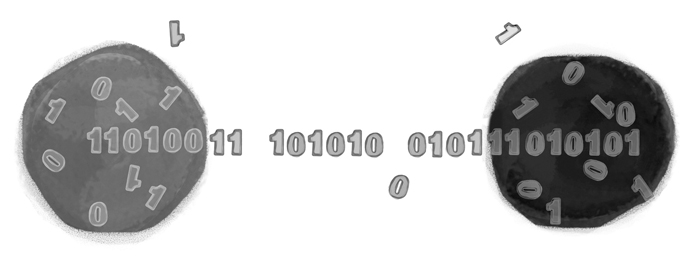
In issues of sex and reproduction, “agency” is often connected to a specifically phallocentric idea of desire, but it can also include unquantifiable factors such as how political resistance, religious ideas, cultural morays, force, or coercion play out in human biological and social systems. From a feminist perspective on bioinformatics, genetic selection that occurs among individuals in the context of these factors may be generative “noise”—a kind of cultural mutation—that ultimately decides the path of evolution. Splicing, mutating, and altering genetic code implies making decisions. When debating futures in the new fields of biotechnologies, the need for coherent narratives and careful translations are critical, as is dialogue between artists, scientists and other cultural practitioners. The results of these conversations can be many and fruitful.
To give a personal example, the last time I spoke with Thomas Schneider to go over and, in some cases, correct the language and scientific concepts in this essay, our conversation inspired an idea for a new experiment in his lab.33 My immodest proposal here is for art and literature to maintain the health of culture through mutational practices. However, careful understanding of biotech’s principals is required if the alternatives are to be viable. Here I solicit your imaginations to consider how best to apply an invasive feminism to this end, one that permeates science with considerations of life’s many un-measurable factors. Carrie Paterson is an artist and writer based in Los Angeles. She has published art reviews, criticism and new media fiction and exhibits sculpture, installation, performance and text-based works.
